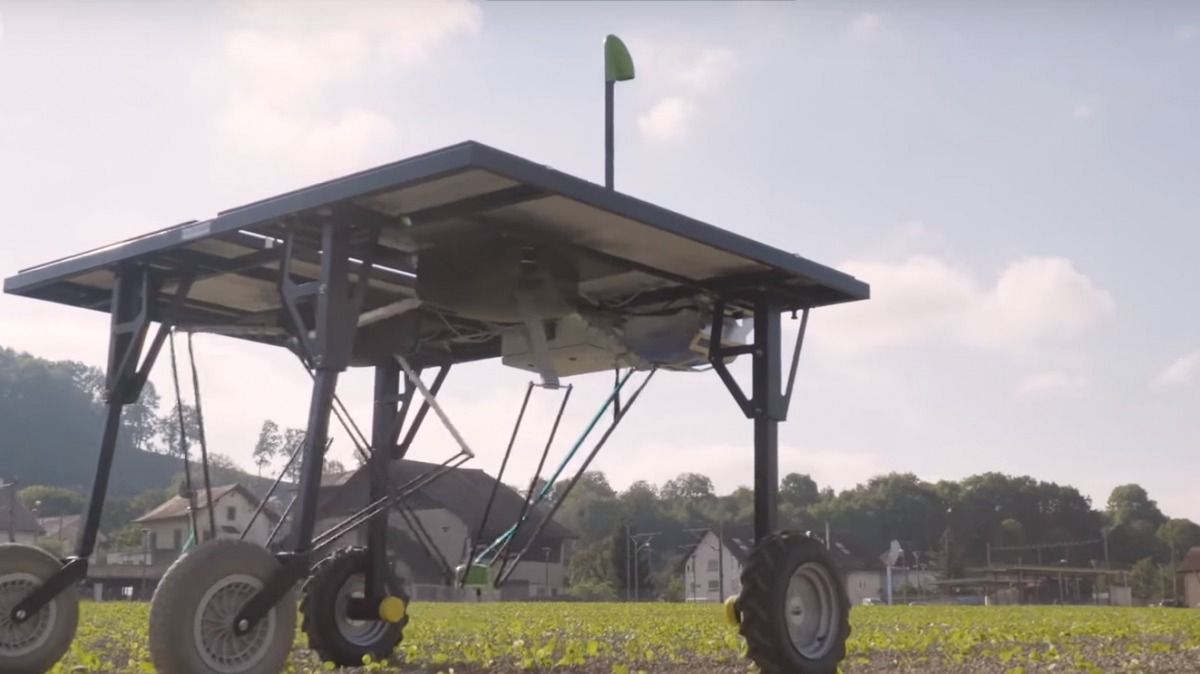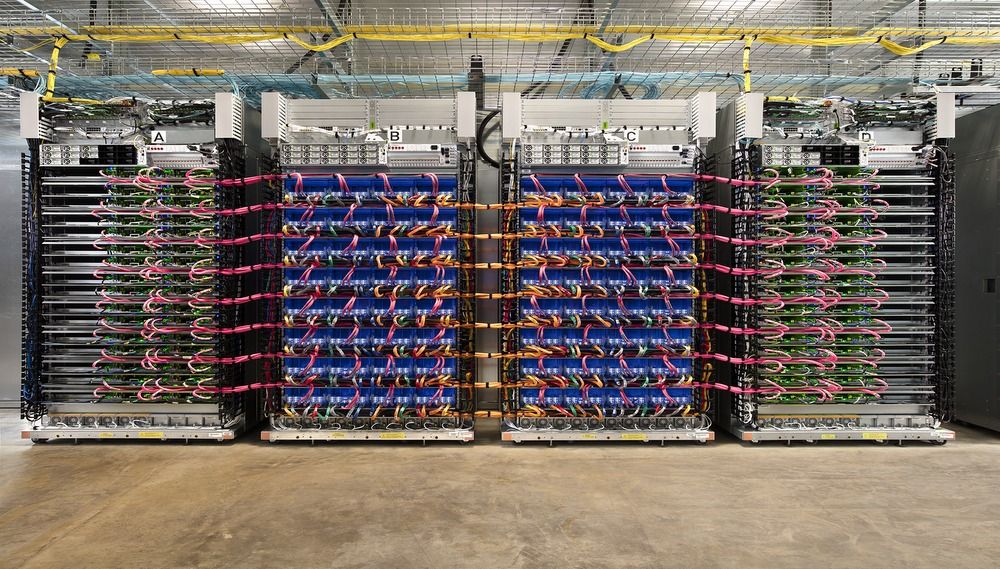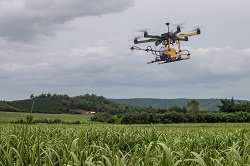On May 7th, Tactical Robotics (a subsidiary of Urban Aeronautics Ltd), based in Yavne. Israel, successfully performed a first “mission representative” demonstration for its lead customer, the Israel Defence Forces. This milestone was announced for the first time today at the Israel Combat Rescue and Emergency Medicine conference where the company also presented Cormorant’s capability to be the first UAS system fielded for unmanned casualty evacuation missions.
Category: robotics/AI – Page 2,343

#5 Transhumanism, Artificial Intelligence, and Universal Basic Income with Zoltan Istvan
A new podcast I did that talks about #transhmanism:
Zoltan Istvan is a transhumanist, futurist, author, and journalist. He’s a former reporter for National Geographic, ran for president in 2016, and is running for governor of California in 2018 under the libertarian party. In this episode we got into what transhumanism is, what his policy platforms are, and tackled a lot of the questions people generally have around these topics. Enjoy!
Follow Zoltan at @ zoltan_istvan on Twitter.


Weed-killing robots are threatening giant chemical companies’ business models
But if robots kill weeds, who will spray Roundup on everything.
AI-powered weed hunters could soon reduce the need for herbicides and genetically modified crops.
How it’s done now: Current farming methods involve spraying large amounts of indiscriminate weed killer over fields full of crops that have been genetically tweaked (usually by the same company that makes the weed killer) to resist the chemicals. The pesticide and seed industry is enormous, worth $100 billion globally. Of that, herbicide sales alone account for $26 billion.
The future: Robots like the one created by ecoRobotix (shown above) will be able to roll through fields, using computer vision to target and spray individual weeds as they go. EcoRobotix claims its robo-brigade will decrease total herbicide use by a factor of 20. You might even be able to get a smaller Roomba-esque version for your home garden.

Self-Driving Cars Have a Big Problem: Americans Don’t Trust Them
Self-driving cars have plenty of benefits — but the American public still doesn’t trust them. A report from the American Automobile Association released Tuesday shows that 73 percent of drivers would be too afraid to ride in a self-driving car, a marked jump from the 63 percent reported late last year, with millennial distrust jumping from 49 percent to 64 percent over the same period.
The results of the survey come despite autonomous-vehicle makers reporting strong signs of progress. Waymo, which started life as Google’s self-driving car project, announced in March that it’s accumulated over 5 billion miles in virtual driving and 5 million miles in real-world driving, after opening its autonomous minivan service to the public last year. Tesla CEO Elon Musk, who said in February he’s “pretty excited about how much progress we’re making on the neural net front,” has predicted autonomous driving for existing vehicles could surface in a matter of months. Companies like Aurora are predicting their systems could hit the markets in 2021.
Article continues below.

Atomic-scale manufacturing now a reality
Scientists at the University of Alberta have applied a machine learning technique using artificial intelligence to perfect and automate atomic-scale manufacturing, something which has never been done before. The vastly greener, faster, smaller technology enabled by this development greatly reduces impact on the climate while still satisfying the insatiable demands of the information age.
“Most of us thought we’d never be able to automate atomic writing and editing, but stubborn persistence has paid off, and now Research Associate Moe Rashidi has done it,” said Robert Wolkow, professor of physics at the University of Alberta, who along with his Research Associate has just published a paper announcing their findings.
“Until now, we printed with atoms about as efficiently as medieval monks produced books,” explained Wolkow. “For a long while, we have had the equivalent of a pen for writing with atoms, but we had to write manually. So we couldn’t mass produce atom-scale devices, and we couldn’t commercialize anything. Now that has all changed, much like the disruption following the arrival of the printing press for those medieval monks. Machine learning has automated the atom fabrication process, and an atom-scale manufacturing revolution is sure to follow.”

Google and Coursera launch a new machine learning specialization
Over the last few years, Google and Coursera have regularly teamed up to launch a number of online courses for developers and IT pros. Among those was the Machine Learning Crash course, which provides developers with an introduction to machine learning. Now, building on that, the two companies are launching a machine learning specialization on Coursera. This new specialization, which consists of five courses, has an even more practical focus.
The new specialization, called “Machine Learning with TensorFlow on Google Cloud Platform,” has students build real-world machine learning models. It takes them from setting up their environment to learning how to create and sanitize datasets to writing distributed models in TensorFlow, improving the accuracy of those models and tuning them to find the right parameters.
As Google’s Big Data and Machine Learning Tech Lead Lak Lakshmanan told me, his team heard that students and companies really liked the original machine learning course but wanted an option to dig deeper into the material. Students wanted to know not just how to build a basic model but also how to then use it in production in the cloud, for example, or how to build the data pipeline for it and figure out how to tune the parameters to get better results.

New robots set to transform farming
The Robots are Coming!
European consumers expect a clean supply chain and biodiversity to be conserved. Therefore, reducing the inputs of pesticides and chemical fertilisers to a minimum and/or replacing them by agro-ecological or robot solutions is required. Furthermore, the average age of European farmers is among the highest of all sectors, thus farming needs to attract young people with attractive working opportunities.
This is where the new agricultural robot solution for precision farming developed within the context of the EU Flourish (Aerial Data Collection and Analysis, and Automated Ground Intervention for Precision Farming) project can play a part. Use of robots in precision farming has the potential not only to increase yield, but also to reduce the reliance on fertilisers, herbicides and pesticides through selectively spraying individual plants or through weed removal.
Helping farmland flourish
Precision farming combines technologies that customise the care that plants receive without increasing labour on the farmer’s side. The project consortium targeted the development of innovative agriculture techniques by monitoring key indicators of crop health and targeting treatment only for plants or infested areas that require it.


3D Printers And Robotic Arms: How One Startup Plans To Build Colonies In Space
When history’s pilgrims and pioneers arrived in a new territory, they used the land’s natural resources to build their settlements. Space colonists, on the other hand, will have to bring materials from Earth and assemble them on Mars. Andrew Rush, president and CEO of space-based manufacturing firm Made In Space, believes the process of creating off-world infrastructure will be similar to building IKEA furniture. Only the parts will be made with an advanced 3D printer and put together by an autonomous robot.
“We think the future of in-space operation is one of manufacturing and assembly, just like how you built the table you’re sitting on right now,” Rush says. “That table is a multi-material object, and its pieces were all manufactured in different ways. I don’t think space colonies are going to take a different approach.”